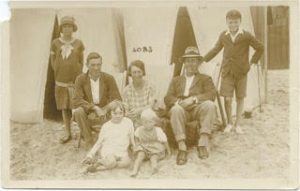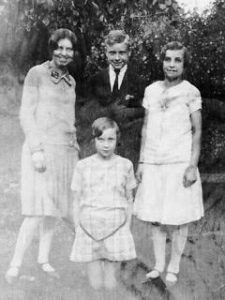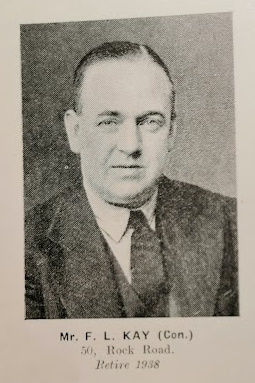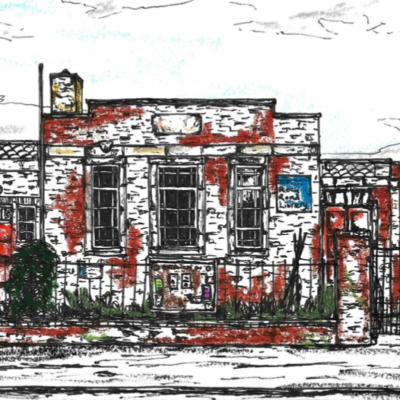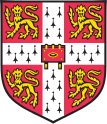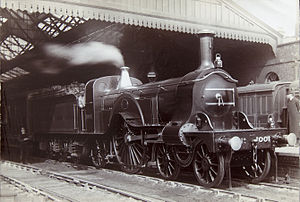Search by topic
- archaeology
- architecture
- bricklayer
- Building of Local Interest
- carpenter
- church
- crime
- dressmaker
- fire
- Great Eastern Railway
- listed building
- medieval
- oral history
- Public House
- Rattee & Kett
- Religious House
- Roman
- scholar
- school
- Then and Now
- tudor
- women
- work
- world war one
- world war two
Search by text

39 Rock Road, (3), (4)
History of 39 Rock Road
1891
(no.4 Rock Road)
Edward Hobday, florist, 58
Lavinia,
Robert J, 30, florist,
Cecil J B, 3,
Gladys D, 1 1/2
1901
(no. 3 Rock Road)
Edward Hobday, 68
Lavinia, wife, 53 [is this the same as Emma in 1911?], born Hunts
Cecil J B, 13, born Hunts
Gladys D, 11, born Cherry Hinton
Karl N, 5, born Cherry Hinton
Alice Kirk, 20, general servant, born Fulbourn
1911
(no. 3 Rock Road)
Edward Hobday, 78, nurseryman and florist, born Worcs.
Emma, 63, born Hunts.
Dora Gladys, daughter, 21, laundry clerk, born Cherry Hinton
Carl Neville, son, 15, born Cherry Hinton
Florence Row[Rose] Farthing, servant, 21, born Cambs
Edward Hobday came from Tardebigge in Worcestershire where he was born in 1833. He was the son of John Hobday (b. 1796 Inkberrow, Worcs.) and Hannah (b. 1796). In 1851 we find Edward working as a servant, presumably a gardener, but in 1861 he is at Haverland (Haveringland) Hall Garden House, Cawston, Norfolk where he is head gardener over a staff of 5. Just north of Norwich, the house and grounds still survive.
He had married Ann Salt (b. Bromfield 1832) on 26 June 1855 at St Marylebone in Middlesex and they had had three children, Edward b.1858, Thomas b. 1859 and Robert b. 1861. Ann however died died at Haverland 16th Feb. 1863.
We next find the family in 1871 at Ramsey Abbey Garden in Cambridgeshire. Edward has a housekeeper, Sarah Salt, presumably Ann’s sister, and as well as Thomas and Robert, there is also Thomas Kinch, Edward’s nephew.
In 1881 he is still in Ramsey living at Wood Lane Garden House. Sarah is still the housekeeper, Thomas Kinch is still there and Robert is a solicitor’s clerk.
In 1885 Edward married Lavinia, daughter of William and Sarah Butler, coach maker and inn keeper of the Rose and Crown, High Street, Ramsay, in the 1880s. They went on to have three children, Cecil b. 1888, Gladys b. 1890 and Carl b. 1896.
Edward Hobday wrote about gardening for magazines. There were also two books: in 1875 he published “Cottage Gardening” and then, in 1887 MacMillan published “Villa Gardening: a handbook for amateur and practical gardeners”.
In 1890 Edward and Lavinia moved with their son Cecil to Cambridge, to join Edward’s son Robert who was running a nursery in Rathmore Road, next to no.44, called Cavendish Park Nurseries. Part of the nursery was also in the vicinity of Red Cross Lane. Edward and Lavinia lived at no.4 Rock Road, later no. 3. The nursery was moved from Rathmore Road to Rock Road in 1895 and subsequently called Hobdays Nurseries.
After Edward’s death in 1916, Cecil took over the nursery. Robert died in 1922; Edward, Lavinia, Cecil and Robert are all buried in St Andrew’s churchyard Cherry Hinton.
Miss Hobday [probably their daughter Dora b. 1890] volunteered for the Red Cross from 1916-1918 and worked at the Huntley Auxiliary Hospital in Herschel Road as a ward maid.
The Hobday family
1913
(3 Rock Road)
Edward Hobday, nurseryman
1926
l-r Beryl, Bert Harwood and Gladys (Hobday), Cecil, Kenneth, (front) Nina and Sheila Harwood
Cecil Hobday’s children in the garden of 39 Rock Road in
1929
Gwen, Kenneth, Beryl and Nina
When Cecil died in 1954 his elder son Kenneth inherited the nursery but had little interest in the business. He had been a fighter pilot during WWII. Hobdays Nurseries was sold in 1961 and houses built on the plot. Kenneth died in 1969.
(source private correspondence, Ancestry and Red Cross archives.)
Contribute
Do you have any information about the people or places in this article? If so, then please let us know using the Contact page or by emailing capturingcambridge@
License
This work is licensed under CC BY-NC-SA 4.0








